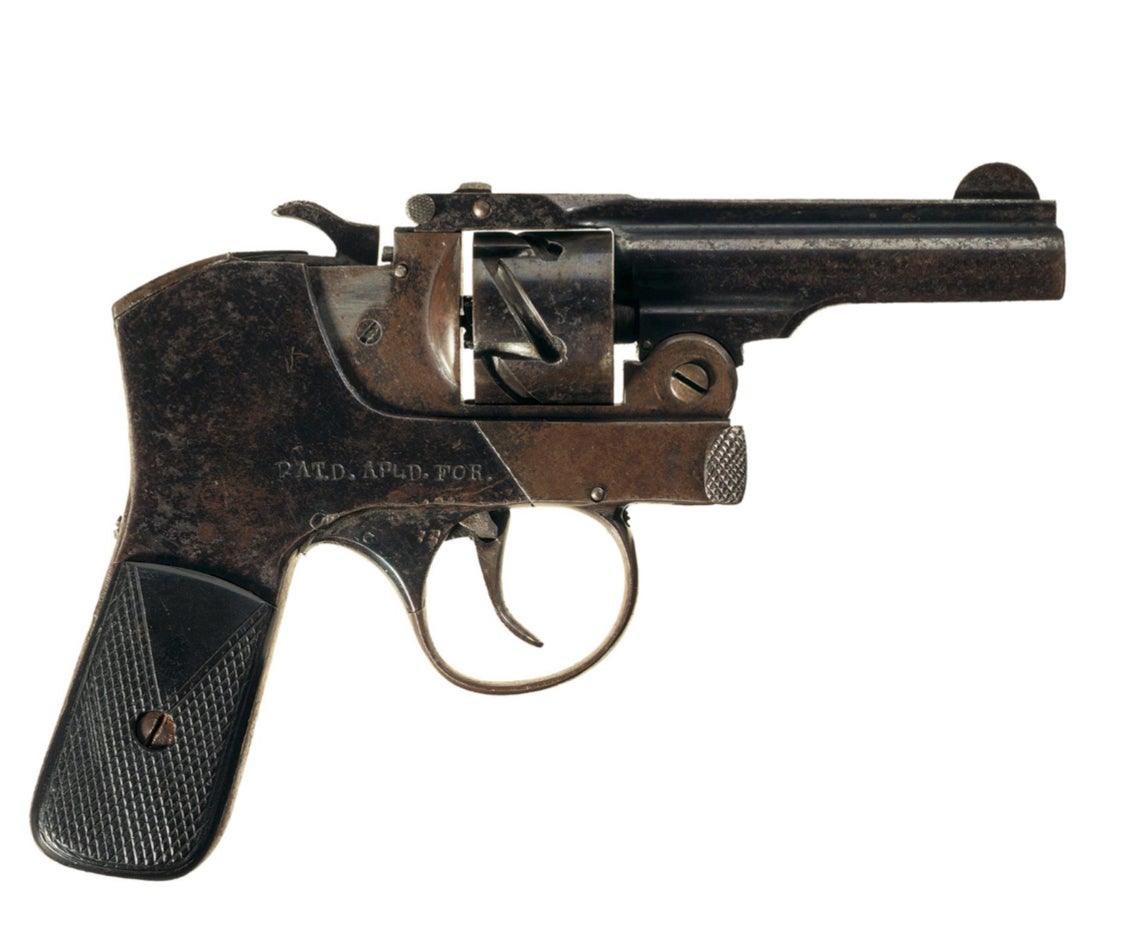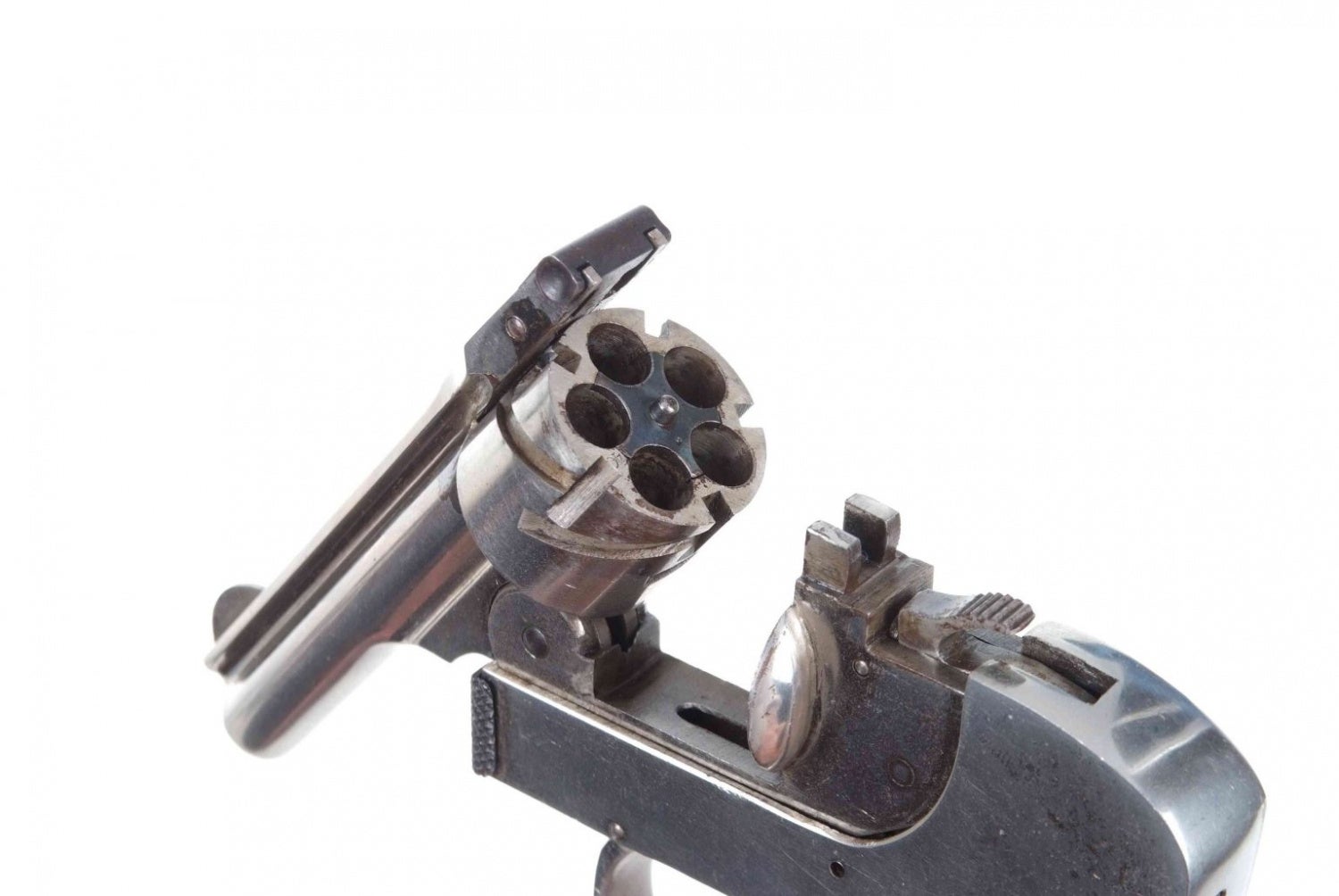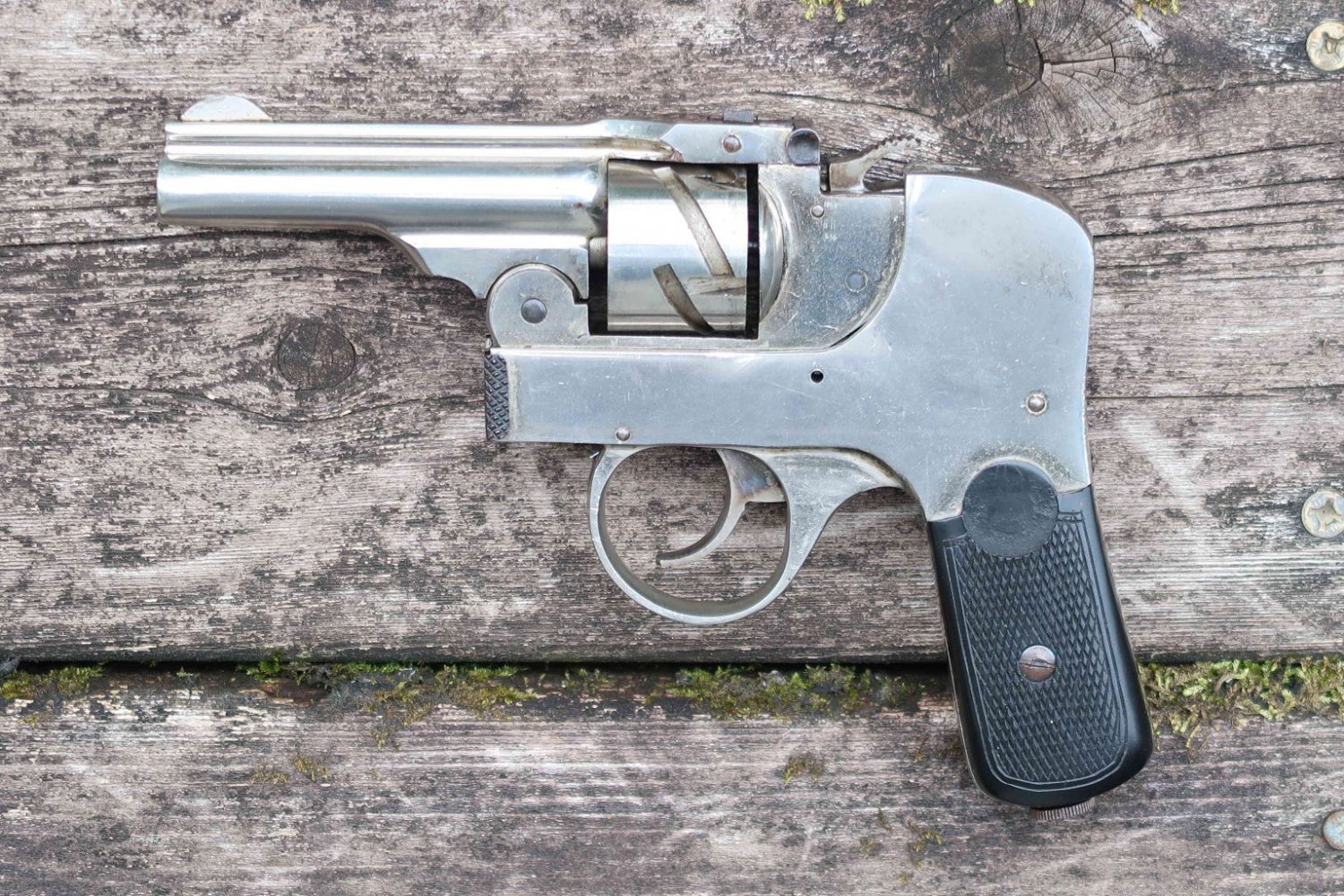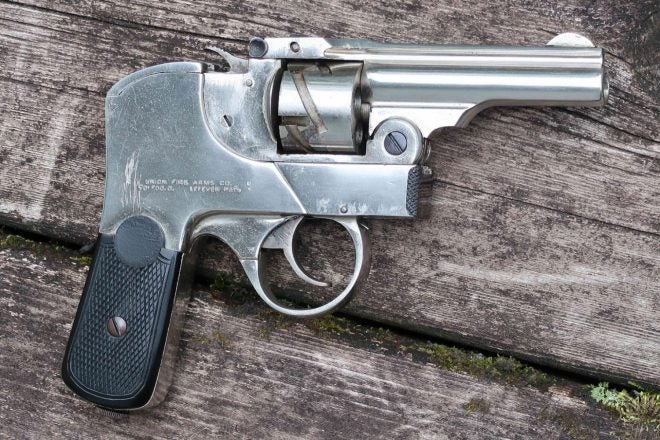In the early 1900’s, noted American firearms designer Charles Lefever (of the Lefever Arms Company family) designed an improved Webley-Fosbery type automatic revolver for the American market. “Automatic revolver” in this instance refers to the operating mechanism that would index the cylinder and cock the hammer for each successive shot. Chambered in .32 S&W short, this neat little wheelgun was simply a bit too expensive for its time and lost out to better-priced competition from double-action revolvers and pocket autos.
Revolver Articles @ TFB:
- Wheelgun Wednesday: Uncle Fudd’s New Space Force 6 Build
- The Rimfire Report: Ruger Wrangler Birdshead .22LR Revolver
- Wheelgun Wednesday: That’s not a Squirt Gun – The Decker Pocket Revolver
- Wheelgun Wednesday: The Fastest Gun of the 1860s was French? The Galand Auto-Extracting Revolver

Early production Union Revolver; note different finish and milling of cylinder cuts. Image Credit: Rock Island Auctions
Produced by Union Firearms Company of Toledo, Ohio, production of this model was very low, around 80 pieces. Surviving examples can be quite expensive if found today, from roughly $3000-$5000 at auction.

Early production Union Revolver; note different finish and milling of cylinder cuts. Image Credit: Rock Island Auctions
Method of operation
One would manually cock the revolver for the first shot, and the revolver’s recoil impulse would drive the barreled action rearwards on the frame. A pin worked in the groove to index the cylinder. The hammer would rebound with recoil energy as well, but would be held rearward and ready for the next shot. Loading and ejecting the cases was via a top-break action.

Union Revolver. Image Credit: Historic Investments
There were a number of improvements and simplifications with the Union Revolver versus the Webley-Fosbery that it was based upon. The Union had a rear shroud that prevented dirt from entering the frame, as well as protecting the shooter’s hand from the hammer and action under recoil. The Union’s cylinder grooves were simplified, and the indexing pin was spring-loaded, so one did not have to manually make sure it was in a groove when closing the action after reloading.

Union Revolver. Image Credit: Historic Investments
Success after failure
Though the Union Revolver is a brilliant design, (and I would not hesitate to bid on one if ever seen at an estate sale) it was not marketed, priced, or sold effectively and went out of production quite quickly. Charles Lefever had other successful designs in the past with shotgun actions and was not discouraged. He kept designing arms and found success later on with a wildly popular platform: the Daisy Model 25 airgun which has sold tens of millions of units to date.

Union Revolver. Image Credit: Historic Investments
 Your Privacy Choices
Your Privacy Choices
